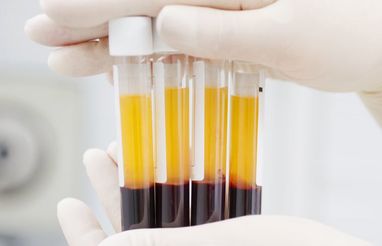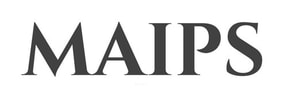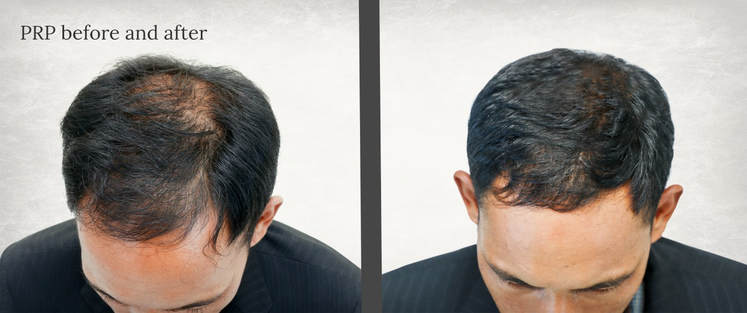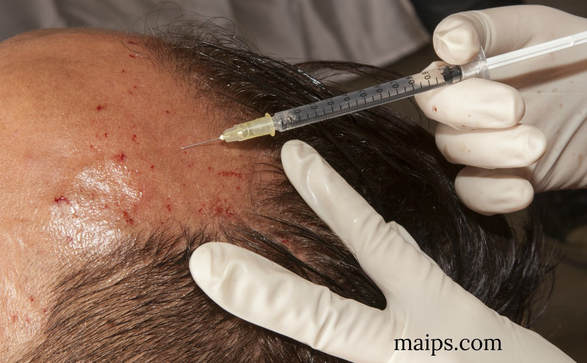Regenerative Medicine - PRP/PRFM in Hair Loss Treatment
 Vials with centrifuged and separated blood. The golden liquid in the upper part is plasma
Vials with centrifuged and separated blood. The golden liquid in the upper part is plasma
Platelet Rich Plasma (PRP) is a product of a patient's own blood, a golden color liquid that is obtained after centrifugation of the blood. PRP is activated and typically injected with a syringe, triggering body's own healing and rejuvenating processes at the injection site.
PRP is currently used in the regenerative and sports medicine for wound and injury healing and tissue regeneration, in the face and skin rejuvenation; and it has been studied in the treatment of the hair loss (Maria-Angeliki, 2015), mostly for the androgenetic alopecia, to a lesser extent - for the alopecia areata; there are also some studies of the effectiveness for the telogen effluvium.
PRP is currently used in the regenerative and sports medicine for wound and injury healing and tissue regeneration, in the face and skin rejuvenation; and it has been studied in the treatment of the hair loss (Maria-Angeliki, 2015), mostly for the androgenetic alopecia, to a lesser extent - for the alopecia areata; there are also some studies of the effectiveness for the telogen effluvium.


